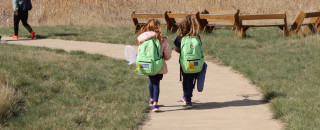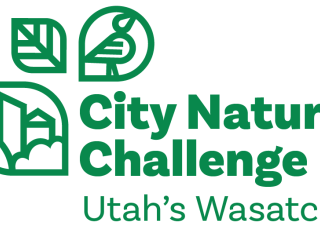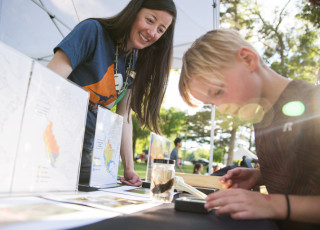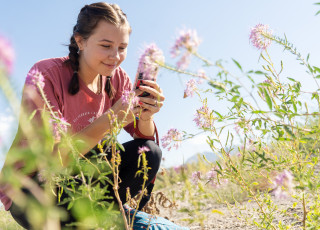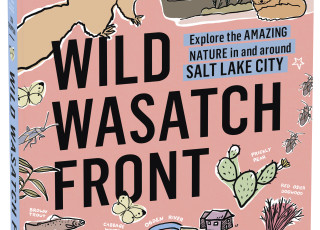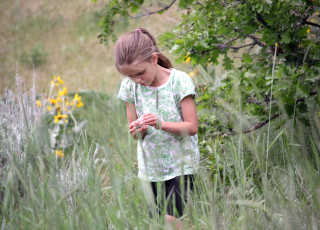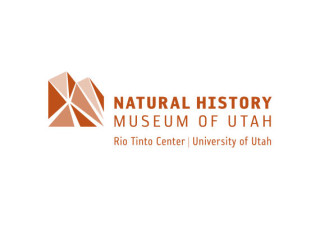Community Scientists Across The Globe Compete In City Nature Challenge April 26-29, 2024
SALT LAKE CITY – APRIL 13, 2024– As community science initiatives build momentum around the world, this year’s ninth annual City Nature Challenge (CNC) will take place in more than 675 cities across seven continents, including Salt Lake City and the surrounding area. Kicking off Friday, April 26 at 12:01 am in each time zone, CNC runs through 11:59 pm on Monday, April 29.
The global event calls on current and aspiring community scientists, nature and science fans, and people of all ages and education backgrounds to observe and submit pictures of wild plants, animals, and fungi using free mobile apps like iNaturalist. From Tuesday, April 30 through Sunday, May 5 the online community will collaborate to identify species that were photographed during the Challenge, with the total number of observations and highlights from around the world announced on Monday, May 6.
As scientists increasingly rely on community-generated data, it is more important and impactful than ever to document nature observations on community science platforms like iNaturalist. From a study on bees in urban environments to a revision of the global biogeography of plants, 890 studies were published using iNaturalist data in 2023. This data helps policymakers make informed conservation decisions that enable humans to coexist with the wildlife around them and view themselves as a part of, not apart from, nature.
After launching the first-ever CNC in 2016, the Natural History Museum of Los Angeles County (NHMLAC) and San Francisco’s California Academy of Sciences (CAS) are hosting their ninth effort. Last year’s four-day Challenge included over 66,000 participants across more than 450 cities around the world to observe and submit pictures of wildlife they encountered. Participants added over 1.87 million observations of nature to iNaturalist, and scientists continue to use these data to understand and conserve urban wildlife.
Notably, the number of participating cities grew from 450 in 2023 to more than 675 in 2024—one of the biggest jumps in CNC history. This significant uptick is the result of a network of organizers in India who are bringing 206 new projects to the global effort.
“Last year, India’s 20 participating cities had a much larger turnout than we expected, so it was clear there was a real need for community events like these,” says Ram Dayal Vaishnav, education director at CitizenScience.Asia and CNC organizer for Hyderabad, India. “Our goal was to have at least one participating city in every state and union territory of India, but as we recruited more and more people, we found there was an overwhelming interest from every corner of the country. While we’re looking forward to our biggest City Nature Challenge yet, wildlife in India is best observed during our monsoon season, which begins in June. We hope to continue this momentum well after the Challenge weekend, and encourage communities—especially younger generations who are more eager to use iNaturalist—to explore their local nature and upload their observations throughout the year.”
How to Participate
For both budding and veteran community scientists, participating is easy:
Find wildlife. It can be any wild plant, animal, fungi, slime mold, or any other evidence of life (scat, fur, tracks, shells, carcasses) found in your participating city. Check out this guide for tips on finding the surprisingly abundant biodiversity in and around your own home.
Take pictures and/or sound recordings of what you find using iNaturalist or your city’s chosen platform.
Learn more on iNaturalist as your observations get identified!
2023 Highlights
Scientists can’t be everywhere at once, so without community observations, they’d miss some incredible finds. From an Indo-Pacific humpback dolphin in Hong Kong to a giant electric ray with albinism or leucism near Mexico’s Socorro Island, there were over 2,500 observations of rare and endangered species during last year’s CNC. In La Paz, Bolivia—which tallied the highest number of observations for the second consecutive year—an observation of a small orchid previously only recorded in the nearby city of Cochabamba provided critical information about the plant’s range. In Ukraine, one iNaturalist user documented the first observation of the palaearctic backspined meshweaver spider in the country. And a recently caught bull shark in a local fish market in Thailand served as a reminder of the dangers of overfishing. Many other endangered, endemic, or data deficient species were recorded during the CNC, an influx of information that gives scientists, educators, urban planners, and policymakers insight into the biodiversity of urban locales throughout the world.
iNaturalist
Signing up is easy and free. Visit inaturalist.org from your browser, or download iNaturalist from the Apple App Store or Google Play store.
About the Natural History Museum of Utah
The Natural History Museum of Utah is one of the leading scientific research and cultural institutions in the country. Established in 1963, the museum’s 10 permanent exhibitions are anchored by its state-of-the-art collections and research facilities containing almost 2 million objects. These collections are used in studies on geological, biological, and cultural diversity, and the history of living systems and human cultures within the Utah region. The museum hosts approximately 300,000 general visitors a year and provides one of the most spectacular private event settings in the Salt Lake City area. NHMU also broadens the reach of its mission through a variety of science-based outreach programs to communities and schools throughout Utah, reaching every school district in the state every other year.
###
Download Media
Press contacts and links
-
Press Contact
Margaret Chamberlain
Public Relations
